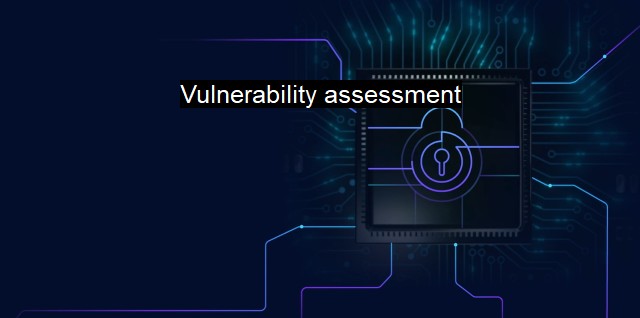What is Vulnerability assessment?
The Importance of Vulnerability Assessment in Cybersecurity: Protecting Your Data Against Evolving Threats
Vulnerability Assessment is a crucial aspect of any comprehensive cybersecurity strategy. Originating from the term "vulnerability", which refers to the weaknesses that cybercriminals exploit to gain unauthorized access to a system, it involves the systematic evaluation of system or network vulnerabilities, including the correct counteract that ill-intentioned individuals can use to attack a system.This procedure helps the cybersecurity professionals identify, categorize, and prioritize the vulnerabilities in a system. By doing effective Vulnerability Assessment, cyber protection teams can appropriately guide the necessary corrective actions to mitigate the risk of cyberattacks, identify the resources needed to recognize less visible risks, and gather critical data that will influence decisions about future security interventions.
Think of Vulnerability Assessment as a discovery process. A thorough assessment uncovers what devices like servers, computers, printers, network devices, firewalls, and switchers are on the network. This process of discovery also includes identifying the software running on these devices, what ports are open, and any potential pathways a hacker could use to gain access to the system.
Methods such as wall-walking, port scanning, inspecting the network for irregularities or variations, and examining services and applications for abnormalities, are conducted. These actions expose vulnerabilities in the overall framework of the system's current design and its resilience, or lack thereof, to infections from a variety of forms of malware, including viruses, Trojans, and ransomware that firewalls and antivirus software might miss.
In a practical context, Vulnerability Assessment generates an inventory of the system's vulnerabilities that might serve as points of exploitation for hackers. From something as simple as weak passwords to outdated software with known security holes, any avenue of attack is cataloged along with potential corrective action.
For instance, in application-specific evaluations, the assessment goes in-depth, checking for an XSS (Cross-site Scripting) susceptibility, SQL (Structured Query Language) injection potential, and a host of other web application-related vulnerabilities. Because these aspects are usually implemented at the application level, they pose unique challenges that can be overlooked by a superficial or less thorough array of checks.
To efficiently conduct and manage a Vulnerability Assessment, professionals typically use specially developed software or engage the services of cybersecurity firms. These tools and services can facilitate the identification of weaknesses and offer solutions to mend these vulnerabilities, further fortifying the defense against potential cyber threats.
Upon testing and identifying potential threats, a critical part of vulnerability assessment is the validation process. This step helps confirm whether the detected vulnerabilities are real or false positives, confirming the identified weakness might indeed allow a hacker to enter the system, thus eliminating any misunderstanding or overestimation of system vulnerability. Properly addressing these false positives is crucial in maintaining the significance, quality, and credibility of the assessment as a whole.
Another part of the assessment is the so-called 'Vulnerability Management', a proactive stance that involves tracking detected vulnerabilities, addressing them, and repeated testing. This continuous perspective on cybersecurity introduces a constant loop of enhanced learning and understanding that reacts promptly to new threats in the hectic, continually evolving digital realm.
Vulnerability Assessment is quintessential in tracing and fixing potential chinks in the cybersecurity armor of an organization. In the dynamic landscape of cybersecurity threats, where new vulnerabilities continually appear, enterprises can only stay secure by persistently staying ahead in identifying possible weak links and strengthening them before an attacker discovers and exploits these digital Achilles’ heels. Compelled by its forward-thinking methodology, Vulnerability Assessment ensures fewer surprises, smoother system operation, enhanced security, and much-needed peace of mind in the ever-escalating war against cybercrime.

Vulnerability assessment FAQs
What is vulnerability assessment?
Vulnerability assessment is a process of identifying the security weaknesses present in a system, network or application. This process involves scanning and analyzing the system for potential security risks that can be exploited by attackers.What are the benefits of vulnerability assessment?
Vulnerability assessment helps organizations to identify potential security risks and take preventive measures to mitigate them. This process can reduce the risk of cyber attacks, data breaches and other security incidents. It also helps in compliance with industry regulations and standards.What is the difference between vulnerability assessment and penetration testing?
Vulnerability assessment involves identifying potential security weaknesses in a system, while penetration testing involves testing the system by actually exploiting those vulnerabilities. Vulnerability assessment can be automated, while penetration testing requires manual testing and analysis by security experts.How often should vulnerability assessment be conducted?
The frequency of vulnerability assessment depends on various factors such as the type of system, the level of security required, and the industry regulations. However, it is recommended to conduct vulnerability assessments on a regular basis, preferably at least once a year, or whenever significant changes are made to the system.| | A | | | B | | | C | | | D | | | E | | | F | | | G | | | H | | | I | | | J | | | K | | | L | | | M | |
| | N | | | O | | | P | | | Q | | | R | | | S | | | T | | | U | | | V | | | W | | | X | | | Y | | | Z | |
| | 1 | | | 2 | | | 3 | | | 4 | | | 7 | | | 8 | | |||||||